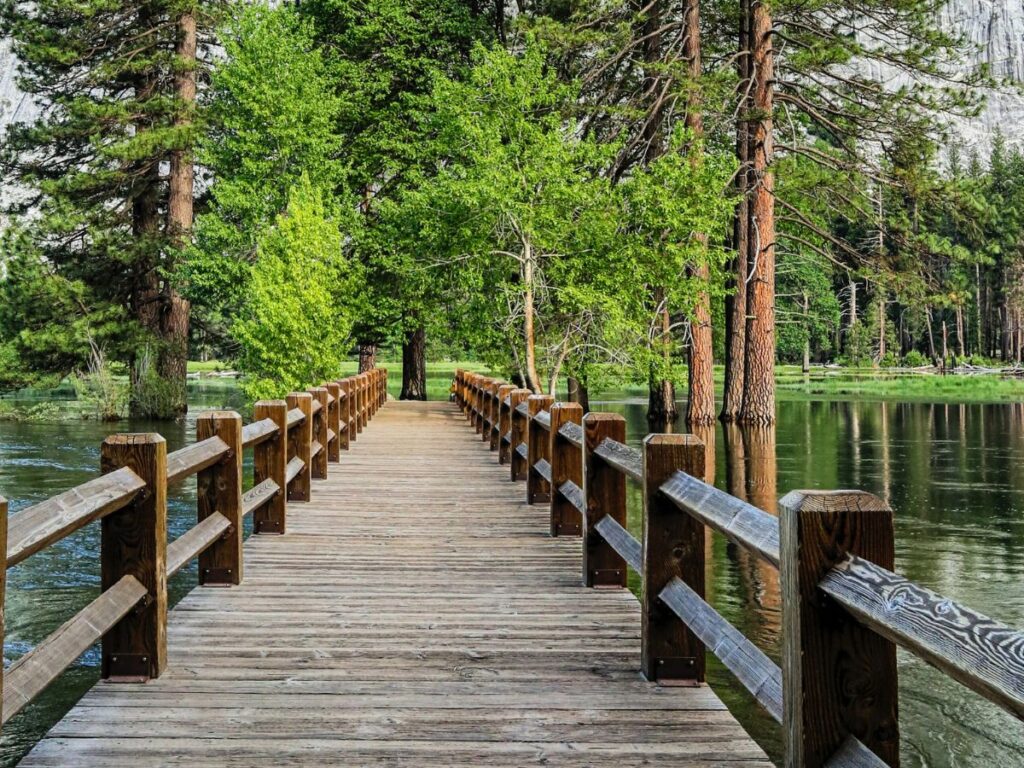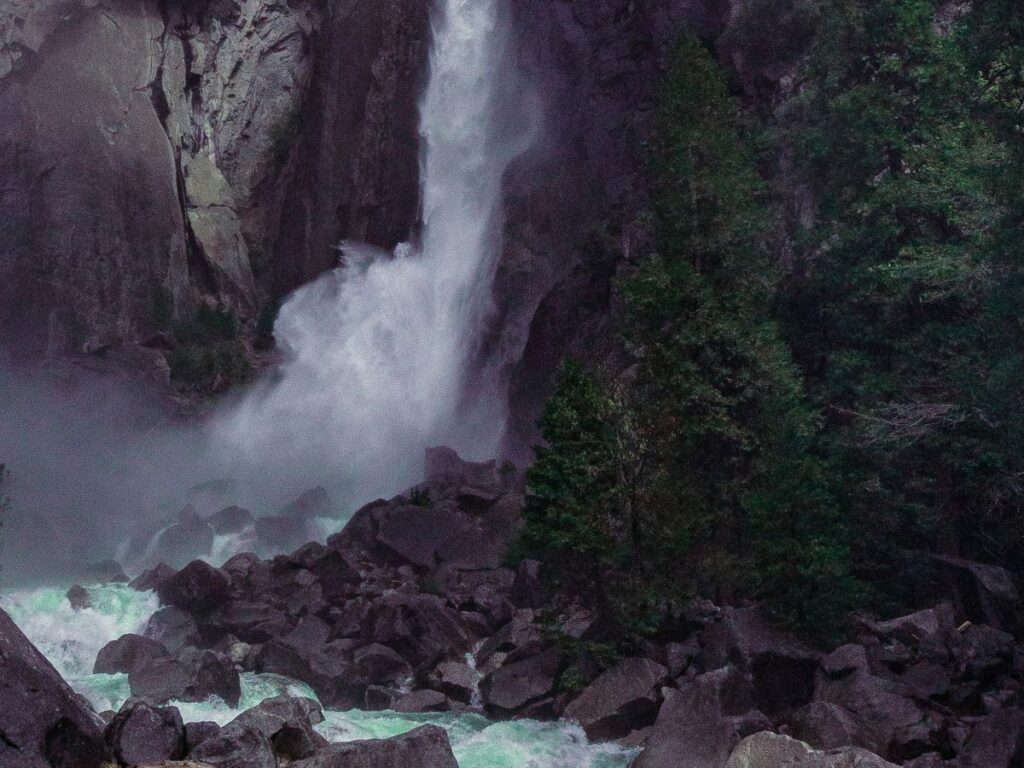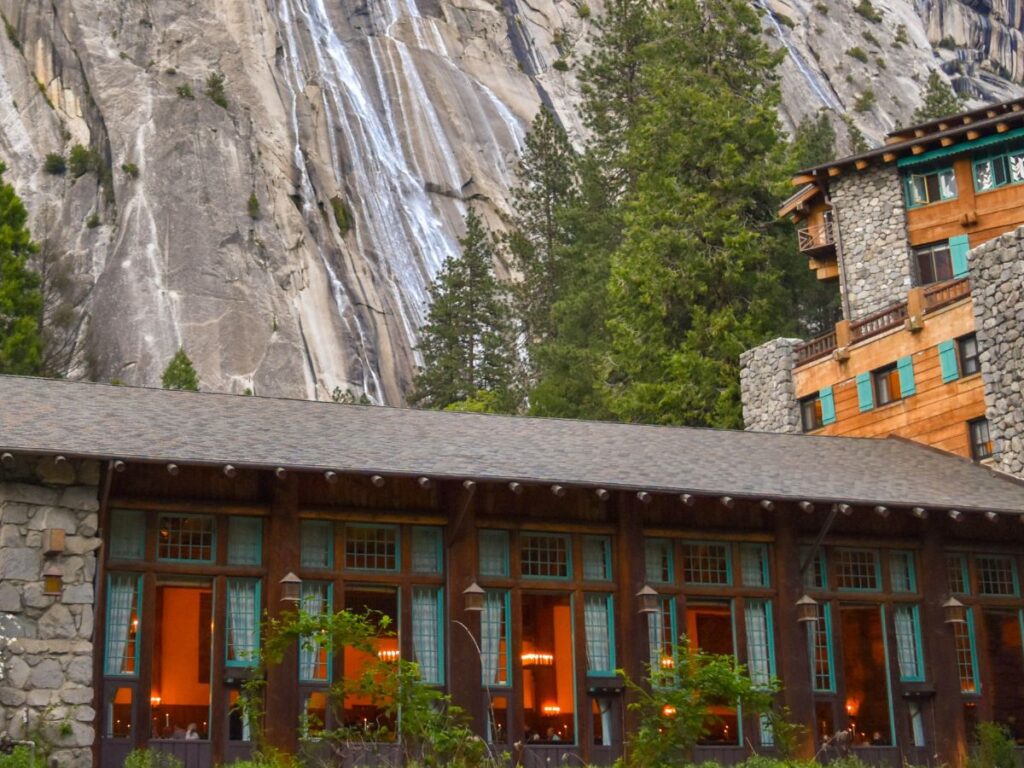The history of Yosemite National Park, which is a shimmering gem of the United States, nestled within the heart of California’s Sierra Nevada mountains is celebrated worldwide. It’s revered not only for its captivating granite cliffs, clear streams, giant sequoia groves, and beautiful waterfalls but also for its rich tapestry of history that has spanned centuries. Understanding Yosemite is not merely about appreciating its natural grandeur; it’s also about diving deep into its chronicles, realizing how each epoch contributed to what the park represents today. By exploring its historical roots, readers can not only strengthen their connection to the park but also foster a more profound respect for its conservation. In this journey, one realizes that Yosemite isn’t just a physical location – it’s a testament to nature’s beauty, human endeavor, and the perpetual bond between the two.
The Native Inhabitants: The Ahwahneechee
The Ahwahneechee, the original stewards of what we now know as Yosemite Valley, played a pivotal role in the early chapters of the park’s history. This tribe had a deep and sacred bond with the land, seeing themselves as an integral part of its sprawling ecosystem. Their name, “Ahwahnee”, translates to “large mouth”, a reference to the Yosemite Valley’s resemblance to a gaping bear mouth.
For the Ahwahneechee, every element of the valley held significance, from the towering granite cliffs to the shimmering waterways. They relied on the land for sustenance, shelter, and spiritual sustenance, with each season dictating a different rhythm of life. The tribe had a detailed understanding of the region’s flora and fauna, employing practices that not only ensured their survival but also maintained the ecological balance of the area. Their relationship with the land wasn’t just about utilization; it was a harmonious partnership, woven with stories, rituals, and a deep reverence for nature.
However, with the influx of European settlers and the consequent changes in the land’s management, the Ahwahneechee’s traditional way of life faced disruptions. While their legacy has faced challenges, it’s integral to remember and honor their indelible mark on Yosemite’s tapestry, reminding us of the original guardians of this magnificent landscape.

European Exploration and Early Contacts
The Yosemite Valley, though a haven for the Ahwahneechee for countless generations, remained concealed from European eyes until the mid-19th century.
European Discovery: Yosemite’s Double-Edged Sword
The initial European encounter with Yosemite can be traced back to the Gold Rush era when California was an epicenter of hope, adventure, and the promise of wealth. As droves of gold-seekers and settlers flocked to the region, the Sierra Nevadas, with its untouched grandeur, beckoned.
In 1851, a group known as the Mariposa Battalion, led by Major James D. Savage, ventured into the valley. The primary intent of this expedition was not exploration for the sake of knowledge or wonder; it was a military effort to address conflicts with Native Americans in the region. However, in the process, the battalion became the first recorded group of Europeans to lay eyes on the breathtaking vistas of Yosemite. Their accounts and tales of this undiscovered marvel quickly spread, drawing increasing interest.
However, this discovery came at a significant cost. The Ahwahneechee and other native tribes faced displacement, disease, and direct conflict with the newcomers. The cultural, social, and ecological fabric of Yosemite, which the indigenous communities had nurtured for generations, was now being rapidly transformed, with profound effects on their way of life.
The Mariposa Wars and the Push for Preservation
The backdrop to the discovery of Yosemite was not a tranquil one. As more settlers flooded into California, lured by the Gold Rush, territorial disputes escalated, leading to what is now termed the Mariposa Wars. These conflicts primarily involved native tribes and the new settlers, with battles largely concentrated in the mid-Sierra region, including areas around Yosemite.
The Mariposa Battalion, which had explored Yosemite, was in fact formed as a direct response to these skirmishes. Their mission was to subdue Native American resistance and relocate the tribes to government reservations, a strategy they believed would reduce clashes and pave the way for smoother European settlement.
However, amidst this turbulence, an unintended consequence emerged. The Mariposa Battalion’s tales of Yosemite’s majesty stirred an awakening among many. Leaders and influencers of the time, having heard of the valley’s unparalleled beauty, began to argue for its preservation. The idea was clear: such a magnificent place should be protected, not just for the current generation but for all that would follow.
This push for preservation eventually culminated in the 1864 Yosemite Grant Act, signed by President Abraham Lincoln. It marked a pioneering moment in the conservation movement, as Yosemite Valley and the Mariposa Grove of Giant Sequoias were set aside specifically for public use, resort, and recreation, laying the foundation for what would later become Yosemite National Park.
Establishment of Yosemite as a Protected Area
Yosemite’s transition from a revered natural wonder to a legally protected area was a critical evolution in the conservation movement. At the heart of this was the Yosemite Grant of 1864. Signed by President Abraham Lincoln during the tumultuous times of the Civil War, this act was groundbreaking. It granted the Yosemite Valley and the Mariposa Grove of Giant Sequoias to the state of California, ensuring they would be “held for public use, resort, and recreation,” marking one of the first times in history that land was set aside purely for conservation and public enjoyment.
President Lincoln and Congress’s decision reflected a growing awareness of the intrinsic value of natural beauty and the importance of preserving it for future generations. By taking this action, they paved the way for the establishment of the national parks system and set a precedent for the conservation of other beautiful and ecologically significant areas throughout the United States.
Transition to a National Park
While Yosemite Valley and the Mariposa Grove of Giant Sequoias had been protected under the Yosemite Grant in 1864, a broader vision for the region soon took shape. Advocacy by figures like John Muir spotlighted the need for more comprehensive conservation. This advocacy led to the establishment of Yosemite National Park on October 1, 1890, which initially encompassed lands surrounding the Yosemite Valley but excluded the Valley and Mariposa Grove themselves.
In 1906, a critical shift occurred. Both Yosemite Valley and the Mariposa Grove were reverted from state to federal control, becoming an integral part of Yosemite National Park. This unification set the stage for more cohesive conservation and management strategies.
Fast-forwarding to 1916, the National Park Service (NPS) was established, ushering in a new era of park management. The NPS’s foundational mandate was to “conserve the scenery and the natural and historic objects and wildlife therein, and to provide for the enjoyment of the same.” In line with this mandate, the NPS assumed management of Yosemite, ensuring its natural beauty, history, and ecological integrity would be preserved for generations to come.

The Role of Prominent Figures
Throughout Yosemite’s storied history, several individuals have stood out for their passion, advocacy, and unwavering commitment to its preservation.
John Muir: Arguably one of the most influential figures in American conservation history, John Muir’s love for Yosemite was palpable. He saw nature as both a source of solace and inspiration. His writings, infused with his keen observations and profound reverence for the natural world, captivated many. Muir passionately advocated for Yosemite’s protection, emphasizing its ecological importance and inherent value. His relentless efforts culminated in Yosemite being designated a national park in 1890.
Galen Clark: Galen Clark’s name is synonymous with the Mariposa Grove of Giant Sequoias. Recognizing the unique and ancient beauty of these towering trees, Clark became one of their most fervent protectors. He was appointed as the first Guardian of Yosemite in 1866 and held the position for over two decades. Under his stewardship, the Mariposa Grove flourished, and his advocacy played a pivotal role in the push for broader conservation efforts in the region.
Theodore Roosevelt: The 26th President of the United States, Theodore Roosevelt, was no stranger to Yosemite’s allure. In 1903, in the company of John Muir, Roosevelt embarked on a camping trip to the park. This visit wasn’t just a vacation; it was transformative. The majestic beauty of Yosemite and Muir’s passionate discourse deeply impacted Roosevelt. The trip cemented his commitment to conservation, leading to the protection of vast tracts of wilderness across the nation during his presidency.
These individuals, each in their own right, have left indelible marks on Yosemite’s history. Their passion, combined with their influence, shaped the course of conservation not just for Yosemite but for natural spaces everywhere.
Significant Milestones in the Park’s Development
Establishment of the National Park Service (1916): The introduction of the NPS in 1916 was a game-changer for Yosemite and other national parks. The NPS introduced standardized management, conservation practices, and visitor services, enhancing the overall experience while prioritizing preservation.
Infrastructure Developments: As visitation grew, so did the need for adequate infrastructure. Roads, notably the Tioga Road and the construction of the Wawona Tunnel, provided better accessibility. Historic facilities like the Ahwahnee Hotel (now known as the Majestic Yosemite Hotel) brought luxury amidst wilderness. Campgrounds, visitor centers, and trail systems were developed, balancing visitor needs with environmental concerns.
Environmental Challenges and Conservation Efforts: Like many protected areas, Yosemite faced environmental challenges. Over-visitation, air and water pollution, and encroachment on wildlife habitats posed threats. In response, the NPS and partners have continually introduced conservation initiatives. These include controlled burns to maintain forest health, efforts to restore meadows and habitats, and programs to monitor and protect wildlife. Through collective action, Yosemite strives to address these challenges, ensuring its wonder remains undiminished for future explorers.

Conservation Efforts and Challenges
Over the years, Yosemite has seen remarkable conservation strides. One standout is the reintroduction of species. The park witnessed the successful reintroduction of bighorn sheep and the peregrine falcon, both once nearly extirpated from the region but now making promising comebacks. The few milestones achieved are:
- Establishment of the Yosemite Grant (1864): This was the first instance of parkland being set aside specifically for preservation and public use by the U.S. federal government. This laid the foundation for the national park system.
- Creation of Yosemite National Park (1890): The park’s boundaries were expanded beyond the initial grant, offering protection to a much larger area.
- Reintroduction of Bighorn Sheep (2015): The Sierra Nevada bighorn sheep, once nearing extinction, were reintroduced into Yosemite, marking a significant conservation success.
- Removal of the Elwha Dam (2011): Though not directly in Yosemite, it’s a significant milestone for national park conservation efforts. The largest dam removal in U.S. history, it set a precedent for ecosystem restoration which can be referenced in Yosemite’s future conservation projects.
- Restoration of the Mariposa Grove of Giant Sequoias (2018): This project aimed to restore the natural hydrology, improve habitat, and ensure the longevity of the iconic sequoia trees. The restoration took multiple years and was a major conservation effort.
- Meadow Restoration: Over the years, Yosemite has undertaken several projects to restore meadows, crucial habitats in the park, by removing invasive species and reestablishing natural water flows.
Ongoing Challenges
Despite these successes, challenges loom. Climate change is altering habitats, affecting both plant and animal life. Over-tourism, especially during peak seasons, strains park resources and can affect its natural beauty. Fire management is another concern, with the need to strike a balance between allowing natural fires to play their ecological role and protecting park assets and nearby communities.
Yosemite National Park Facts
- Yosemite National Park was officially designated as a national park on October 1, 1890, making it one of the oldest national parks in the U.S.
- The park covers an expansive area of approximately 1,187 square miles (3,027 km²), which is roughly the size of the U.S. state of Rhode Island.
- Yosemite is renowned for its iconic granite cliffs, with El Capitan and Half Dome being among the most famous rock formations in the world.
- The park is home to North America’s highest waterfall, Yosemite Falls, which plunges 2,425 feet (739 meters) in three stages.
- Yosemite provides habitat for over 400 species of vertebrates, including mammals, birds, fish, amphibians, and reptiles.
- The Mariposa Grove in Yosemite is home to over 500 mature giant sequoias, some of which are believed to be over 3,000 years old.
- The park was historically inhabited by Native American tribes like the Ahwahneechee. The legacy of their presence can still be seen in various sites within the park.
Cultural and Historical Landmarks
The Ahwahnee Hotel
- Formerly known as the Ahwahnee, now the Majestic Yosemite Hotel.
- Opened its doors in 1927.
- Architectural design inspired by the natural surroundings of Yosemite.
- A preferred choice for many dignitaries and celebrities over the years.
- Seamlessly combines luxury and nature for a unique experience.
Rock Climbing in Camp 4
- Camp 4 is considered sacred ground for rock climbers.
- Became the heart of climbing culture during the 1960s and 70s.
- Was the birthplace for many climbing techniques still employed today.
- Gave rise to several climbing legends who honed their skills here.
- Recognized as a historic site for its influence on the sport of rock climbing.
Historical Buildings
Yosemite houses numerous historical structures, each with its own story. Each building serves as a window into different eras of the park’s rich history.
- Parsons Memorial Lodge: A hub for conservationists and thinkers over the years.
- Yosemite Valley Chapel: Holds the distinction of being the oldest structure within the park.

Recent Developments and Future Visions
Modern Challenges: The recent years have brought their share of challenges. Wildfires, intensified by changing climate patterns, pose significant threats. The ever-increasing lure of Yosemite means that tourism management is more critical than ever to protect both visitors and the park itself. Additionally, the effects of climate change are multifaceted, from changing water sources to impacting native species.
Preservation for Future Generations: Despite these challenges, the park remains committed to its future. Efforts are underway to better manage visitor numbers, especially during peak periods. Investments in infrastructure, research, and education aim to ensure that Yosemite remains a cherished destination, not just for today’s visitors, but for countless generations to come.
Key Takeaways
- The park’s history traces back to the Ahwahneechee tribe, illuminating their profound connection with the land.
- The first encounters of Europeans with Yosemite reshaped the region, influencing the lives of its indigenous inhabitants.
- From the Mariposa Wars to legislation, multiple events spurred the drive to protect this natural haven.
- With the support of influential figures like President Lincoln, Yosemite transitioned from a state-controlled grant to a national park in 1890.
- Visionaries like John Muir, Galen Clark, and President Theodore Roosevelt championed for the park’s preservation and recognition.
- The park has faced and continues to navigate issues like over-tourism, climate change, and fire management.
- Beyond nature, landmarks like the Ahwahnee Hotel and Camp 4 showcase Yosemite’s rich cultural and recreational heritage.
FAQs
- What was the purpose of the Yosemite Grant in 1864?
The Yosemite Grant was established to protect Yosemite Valley and the Mariposa Grove of Giant Sequoias. - What species have been reintroduced into Yosemite?
Bighorn sheep and the peregrine falcon are among the species reintroduced. - What challenges does over-tourism pose for Yosemite?
Over-tourism strains park resources and can affect its natural beauty. - How is fire management handled in Yosemite?
The park balances allowing natural fires to play their ecological role with protecting assets and communities. - Are there historic buildings to see in Yosemite?
Yes, from the Parsons Memorial Lodge to the Yosemite Valley Chapel, several historic structures dot the park. - What are the current challenges faced by the park?
Modern challenges include wildfires, over-tourism, and climate change impacts. - How is the park ensuring its preservation for future generations?
Through visitor management, infrastructure investments, research, and education. - How is over-tourism managed in peak seasons?
The park employs measures to manage visitor numbers and protect resources. - Why is fire management a concern for Yosemite?
Fires, both natural and human-caused, can threaten the ecological balance and assets of the park. - Are there ongoing conservation efforts in Yosemite?
Yes, including habitat restoration, wildlife protection, and visitor education.
Extra Scoop for You
Official Website of Yosemite National Park: https://yosemite.org/
Contact: 209/372-0200
For those of you who are intrigued about birding, we have some extra reading material recommendations for you. Discover the enchanting world of Yosemite National Park with these popular books:
- The Yosemite by John Muir
- Yosemite: The Complete Guide by James Kaiser
- Yosemite: A Storied Landscape by Kerry Tremain
